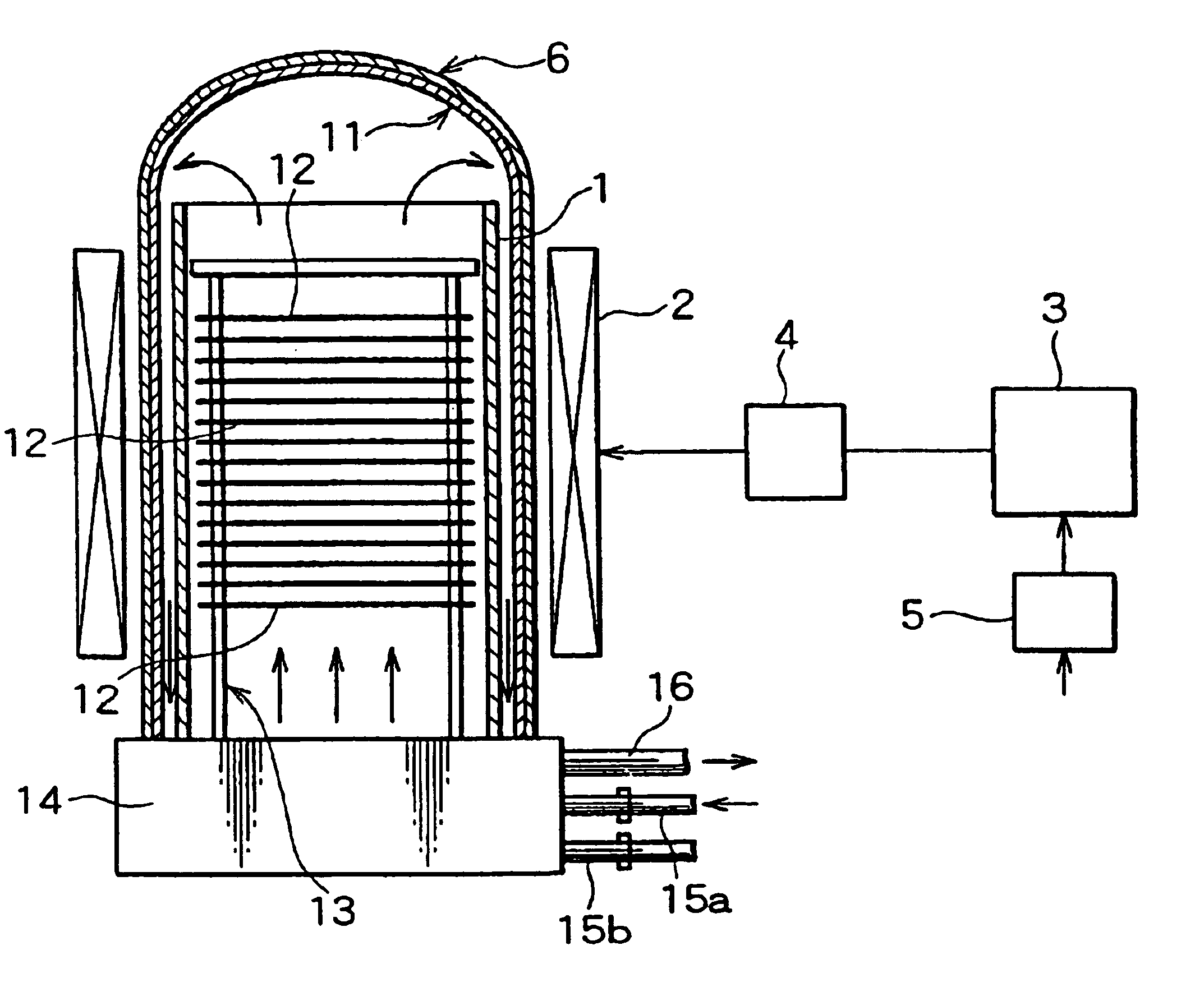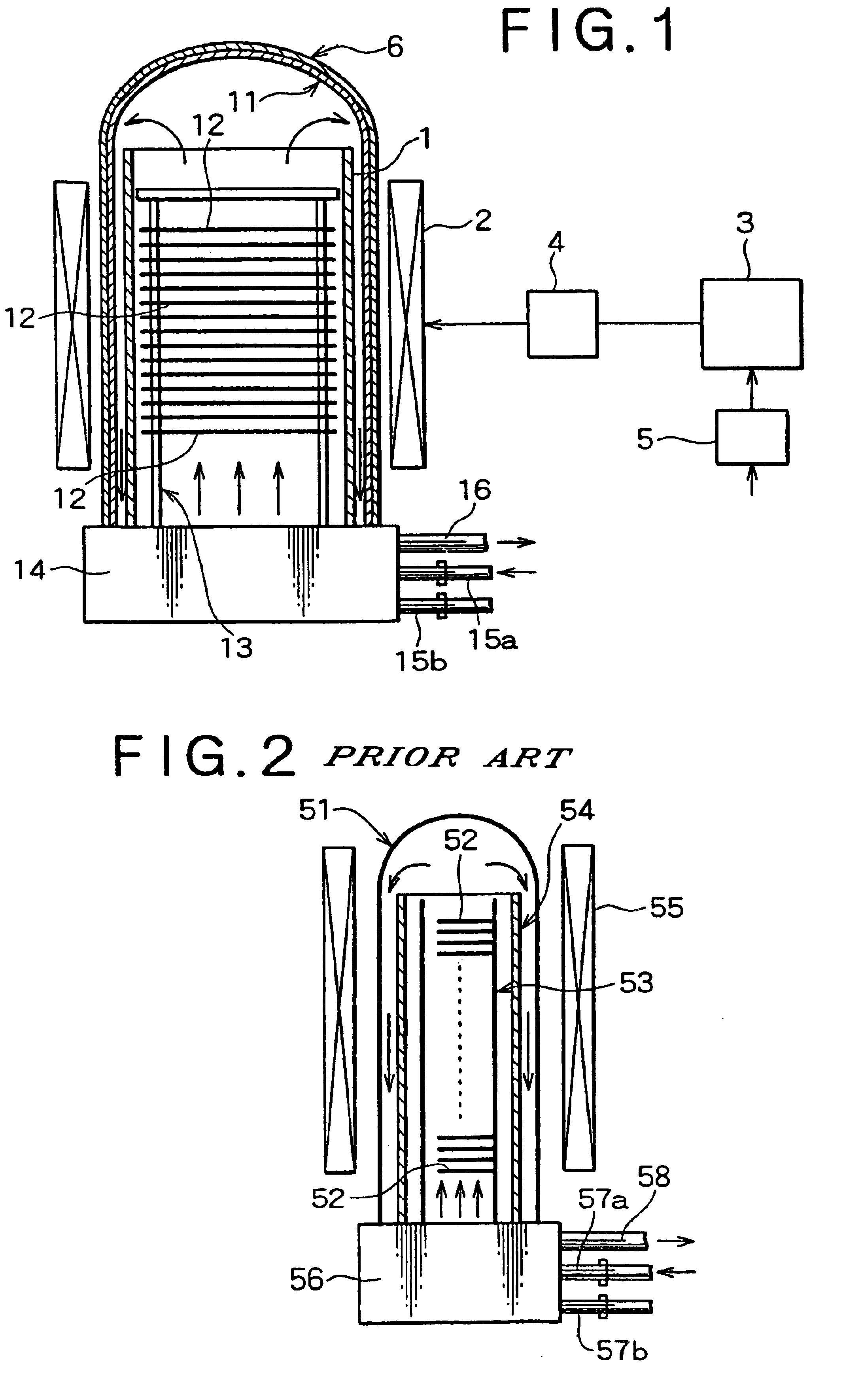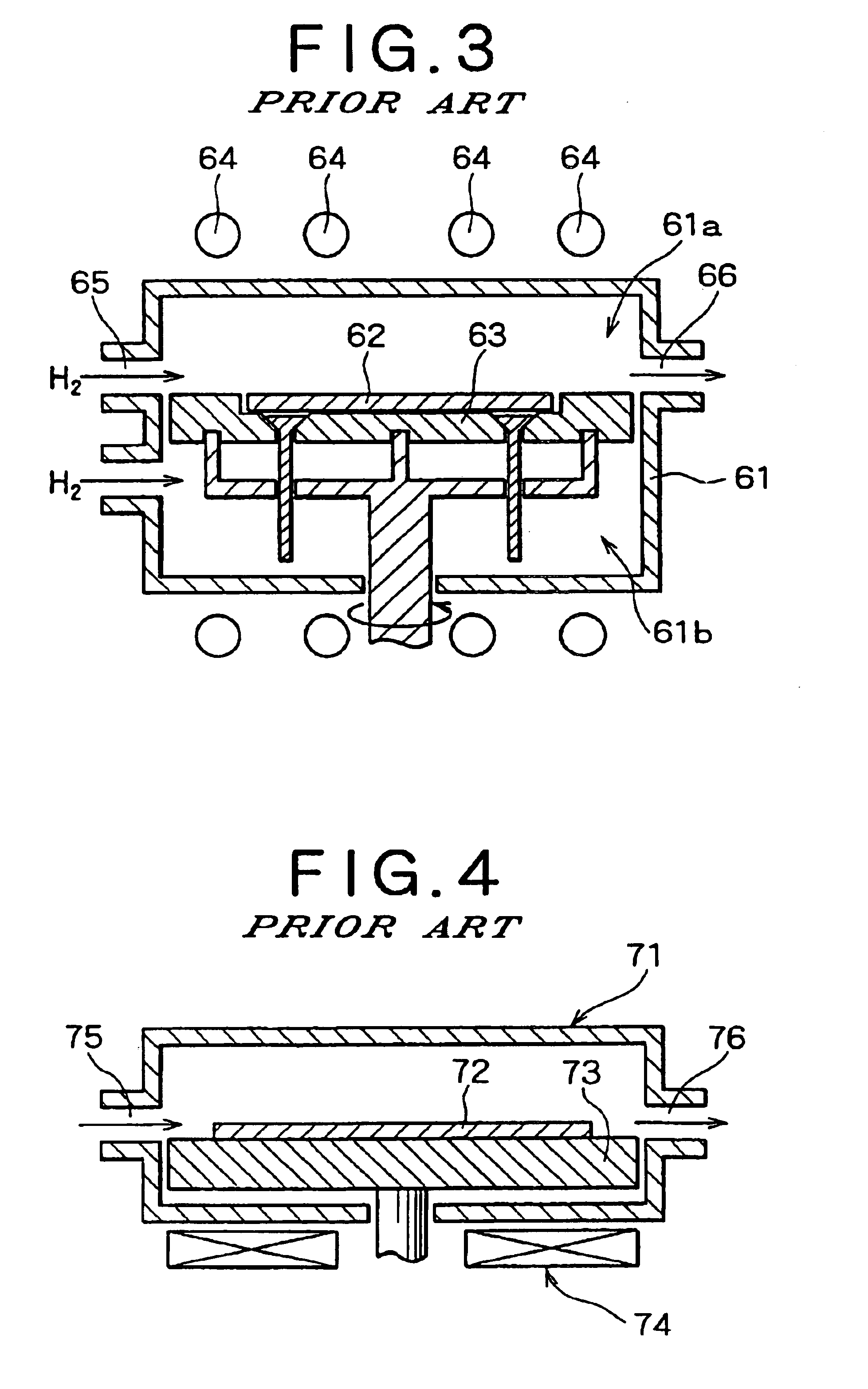Heating apparatus using induction heating
a technology of induction heating and heating apparatus, applied in the field of heating apparatus, can solve the problems of affecting throughput, lowering temperature, and theoretically unsuitable apparatuses for and achieve the effect of rapid raising or lowering temperature of wafers and high volume processing
- Summary
- Abstract
- Description
- Claims
- Application Information
AI Technical Summary
Benefits of technology
Problems solved by technology
Method used
Image
Examples
Embodiment Construction
[0028]An explanation is given below about an embodiment of the invention, referring to the accompanying drawing. FIG. 1 is a schematic diagram illustrating an example of vertical low pressure CVD systems equipped with the heating apparatus of the invention.
[0029]As shown in FIG. 1, this batch processing vertical low pressure CVD system is provided with a reactor 11 made of quartz having circular hollow cross-sections and dome-shaped, closed top; a cylindrical body 1 made of glass-like carbon which is placed in the reactor 11 and is an inner tube formed in cylindrical shape; a boat 13 which is placed inside the cylindrical body 1 made of glass-like carbon and is designed to be mounted with a large number of vertically arranged wafers 12; and a manifold 14. The vertical low pressure CVD system is further provided with a heat insulating body 6 made of carbon fiber felt covering the reactor 11; an air-core-type, high-frequency induction coil 2 placed concentrically with the reactor 11 c...
PUM
| Property | Measurement | Unit |
|---|---|---|
| Heat | aaaaa | aaaaa |
Abstract
Description
Claims
Application Information
 Login to View More
Login to View More - R&D
- Intellectual Property
- Life Sciences
- Materials
- Tech Scout
- Unparalleled Data Quality
- Higher Quality Content
- 60% Fewer Hallucinations
Browse by: Latest US Patents, China's latest patents, Technical Efficacy Thesaurus, Application Domain, Technology Topic, Popular Technical Reports.
© 2025 PatSnap. All rights reserved.Legal|Privacy policy|Modern Slavery Act Transparency Statement|Sitemap|About US| Contact US: help@patsnap.com



